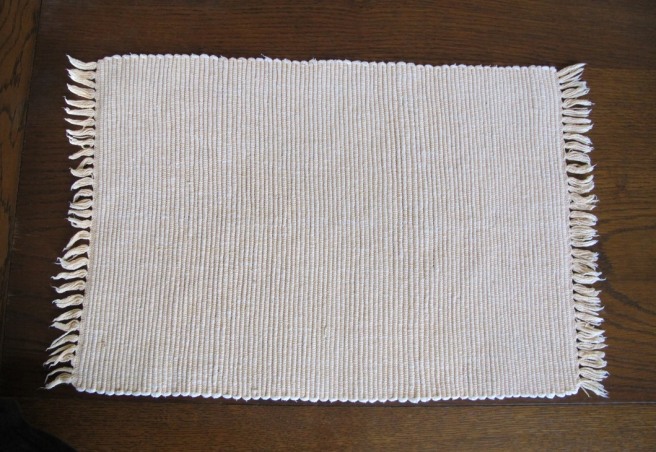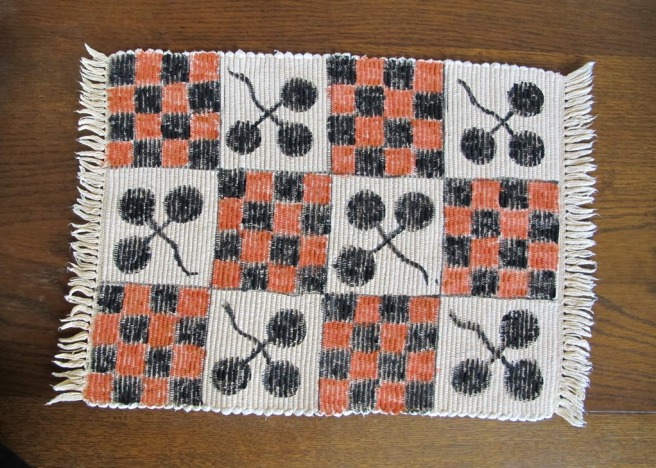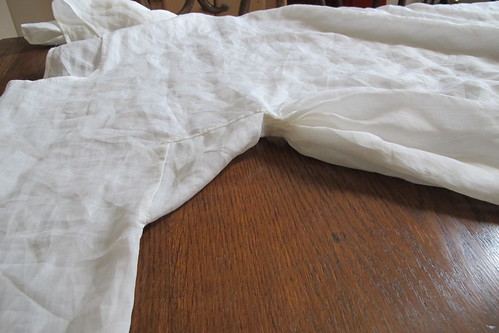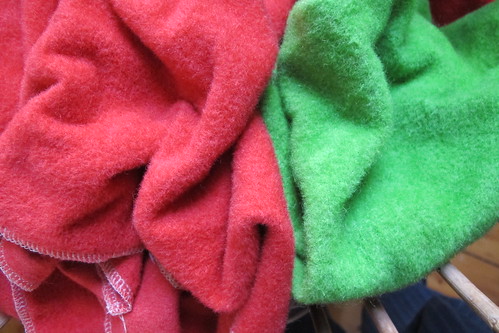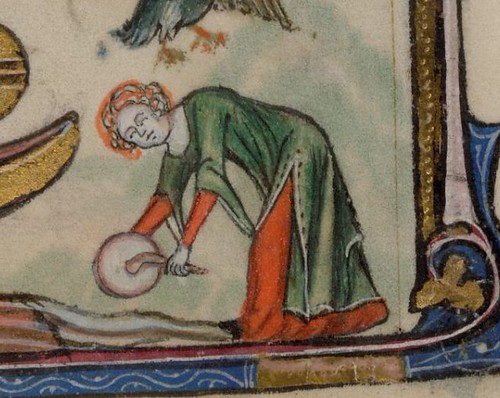Back in April last year, I agreed to contribute to a mad plan by donating an item for a quest that would also be a gift for a friend. It needed to be an item that might be useful to a gentleman living in Calais in 1376. I have made a bunch of tablet woven belts for myself and others which people have been kind enough to admire. I decided to make another for this project. Construction started in October, and the belt finally made it to the intended recipient in January. Now it doesn’t need to be a secret any longer I can write it up publicly.
I went back to look at weave types though. My previous belts had mostly been random chevron patterns under the mounts. Defensible, but I felt like doing something different. I had always liked this extant band, and it is listed as mid 14thC and 8.5mm wide.

Museum of London “Textiles and Clothing” Fig 100B.
Then I found this image in a collection of extant medieval girdle images on , sigh, pinterest. The weave is rather similar.
This is the blog post it came from. The image itself seems to come from a Sotheby’s auction catalogue. A translated description in the post is:
“With a length of 128 cm and a width of 1,5 cm the original tablet woven band has been typical for a belt of 1340 to 1350. It is decorated with 51 metal mounts. Through the quality of the mounts it is supposed that the belt has been produced in France.”
Fibre:
The MoL band is silk. I’m thinking the Sotheby’s one is too (I don’t read German at all well but a few textile terms are familiar and the blogger has done her reproduction in silk). I did not have appropriate silk on hand. I had however recently found a worsted wool that weaves well (“Cool wool” from Dairing). Wool girdles are perfectly authentic though lower status I’m told. When doing my test weave with this wool, the weft behaved badly, twisting up on itself and forming tiny picots on the edge. So in this belt I used a cotton weft for ease of weaving.
Colour:
Both extant bands are done in a single colour, but the SCA has sumptuary traditions for plain belts in any single primary colour. I would have been happy to make a plain red one, but I did not want it to be confused for a squires belt. So I used a red border and an off-white centre. These were the two colours I had of this wool.

However, after weaving it, I concluded that though I really liked the result, looked at with a medieval eye, it did not look rich enough. So I overdyed the whole thing with yellow. Though annoyingly, that meant that the weft then didn’t match the centre section of the weave. I will point out that the gentleman in question is known to wear very bright colours for the fun of it.

Weave:
I’ve used 18 four holed tablets all threaded alternately S and Z. The edge three tablets on each side were turned 1/4 turn forwards each weft pass. The centre tablets were turned two 1/4 turns forward, then two 1/4 turns backward. I think the result looks pretty good except the border weave is a bit loose. That could be perhaps from the weft being a little heavy? or possibly that the double turn of the centre tablet takes up more length? The resulting band was 16mm wide to match the buckle I wanted to use.

The MoL weave description is very similar except they split the centre pack into two section of alternating tablets, one half turned twice forward and the other twice back, then reversed. I couldn’t see why that was necessary, though I might later experiment and see what difference that makes.
The blog reproduction linked above uses six hole tablets and two wefts, which I don’t fully understand and anyway, I only have four hole tablets and wasn’t up for making 6hole.
Then I attached the buckle (copy of an extant one from Gaukler) and end and blinged it up with mounts. More mounts would have been a better match for extant examples, but this was as many as I could get at the time to work on such a narrow band. Riveted mounts seem to be more authentic, but again, working with what I had. Oh, the buckle is brass and the mounts are gold plated pewter.

Here it is as it would be worn, though only on my dress dummy.

and a pretty coiled shot for good measure.

Save
